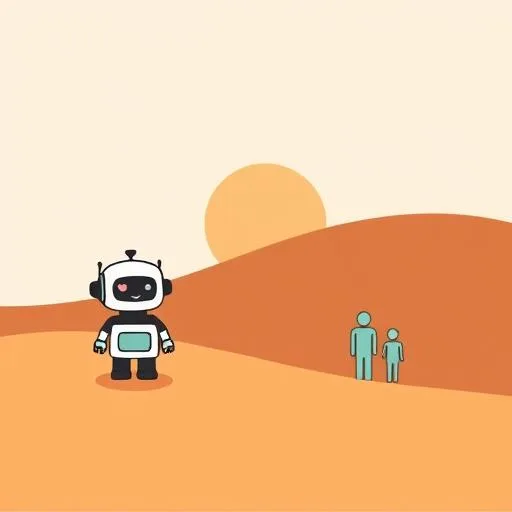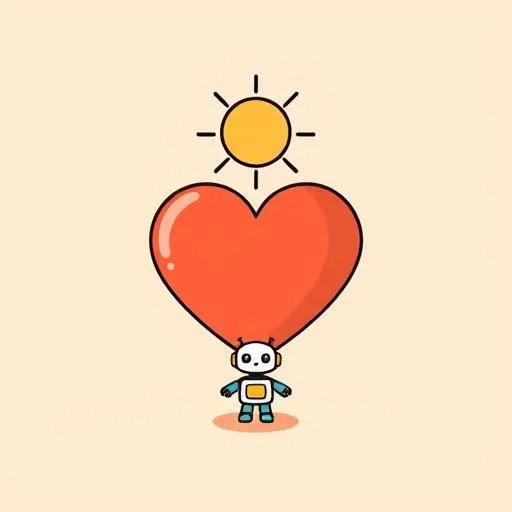
That gentle hum you hear isn’t just your fridge—it’s the sound of a revolution heating up. By 2034, AI-powered robots could transform from lab curiosities into everyday helpers, with the market size leaping from $20.5 billion to a staggering $124.26 billion. As parents, we’re not just watching this unfold; we’re raising the kids who’ll live it. What will they see? Will it be intimidating or inspiring? Let’s take a breath and unpack this together, because amidst the buzz of circuits and code, one truth remains constant: our children’s future depends less on the robots they meet and more on the humanity they hold dear. The data shows growth, but the heart of parenting stays the same—nurturing resilient, curious humans ready for whatever comes next.
The Quiet Rise of Helpful Hands
We’ve all seen the headlines—robots taking jobs, AI gone wild—but the real story is quieter and more beautiful. Today’s AI-driven robots aren’t sentinels; they’re solutions designed to save time and extend care. Picture this: a surgical robot guiding a doctor’s hand during a delicate procedure on a child, or a care companion reminding your future elderly neighbor to take her pills. This isn’t just a number—it’s why tech becomes our ally. That’s the heart of the 22.16% annual growth projected through 2034 to $124 billion. Precedence Research highlights healthcare as a massive driver, and no wonder: with global chronic disease costs projected at $47 trillion by 2030, we need every smart tool possible.
But here’s what hits home for us as parents: these aren’t replacements for human touch—they’re like the training wheels on your kid’s bike. Even as tech lifts burdens, human connection steers the journey. Think about it: when your child takes their first wobbly steps toward independence, you’re right there holding on, not a machine. In hospitals, doctors and robots team up to heal; at home, we’ll still be the steady presence for scraped knees and big dreams. And that’s the reassuring takeaway. Technology grows, but our role as the warm, guiding force in our children’s lives? That’s unshakeable. So next time you hear “AI robot,” imagine it not as a rival but as a quiet ally helping us focus on what matters most: caring for one another with intention and joy.
What Our Kids Might See (And Why It’s Okay)
Kids absorb the world like sponges, so it’s natural to wonder: how will this robot revolution shape their lens? I remember my daughter’s eyes lighting up watching a robotic arm paint—it was magic! But the coolest part? Her immediate pivot: “Daddy, can we make art?” That moment taught me: technology fascinates, but human creativity ignites. The data bears this out too; by 2024, robot-assisted surgery already led AI applications in healthcare (13% market share), yet it remains a *tool* for human expertise. Similarly, a Microsoft-IDC study found 79% of healthcare organizations use AI—it empowers professionals but doesn’t replace their judgment.
So how do we channel that curiosity without letting it overwhelm? Keep it playful and grounded. Instead of fretting over screen time, frame tech as one toy in the box. “Remember the robot video?” I’ll ask. “What would *you* build to help people?” Then we draw ideas on real paper, or act them out in the backyard. This isn’t about making engineers—it’s about nurturing problem-solvers who value empathy. And when they ask, “Will robots take my job?” smile warmly: “Nope, because robots can’t feel joy when you share a hug.” That’s the heart of it: in a world of smart machines, emotional intelligence will be the ultimate superpower. What’s one way you’ve turned tech curiosity into a real-world chat this week?
Building Skills That Outlast Any Gadget

Here’s the kicker: preparing kids for a robot-filled future has nothing to do with teaching them to code. It’s about building skills that start with sandbox play and never stop. Robots excel at repetitive, precise tasks—counting, sorting, analyzing data—but they stumble on the messy joy of childhood. When your kid builds a tower only to watch it crash, they’re learning resilience a robot can’t replicate. When they share their snack with a friend, they’re practicing empathy no algorithm can mimic.
So let’s double down on what makes us human. Trade extra screen minutes for “unplugged” adventures: a neighborhood scavenger hunt (bonus points for spotting birds, not bots!), or a family puzzle session where mistakes become moments of laughter. And when tech *does* enter the scene—like using a kid-friendly app to learn about animal robots—keep it balanced with a “tech timeout” ritual. The Precedence report shows hardware leading growth (22.69% CAGR), but our kids need more than hardware—they need heart—compassion and connection. Every time you choose a conversation over a device, or a park stroll over passive watching, you’re wiring their brains for the future: adaptable, connected, and deeply, un-robotically human. Why not try this: next time they’re fascinated by a robot, follow it with a “human helper” game—like setting up an obstacle course where they guide a blindfolded friend using only their voice. It’s fun, it’s real, and it builds the skills that matter most.
The Heart of It All

At the end of the day, the soaring AI robots market tells a story bigger than numbers—it’s about hope. We’re building a world where machines handle the heavy lifting so humans can focus on the heartfelt stuff: raising kind kids, sharing meals, and looking out for neighbors. And that’s worth getting excited about!
So take a deep breath. The future isn’t something to brace for—it’s a playground waiting for your child’s unique spark. Let’s keep the wonder alive, one bubble chase, one bedtime story, one “let’s figure this out together” moment at a time. Because when it comes to raising resilient, joyful humans? Love wins every time. And as these helpers grow in our hospitals and homes, remember: the most powerful intelligence has always been the warmth we share.
Source: AI Robots Market Size Projected to Reach USD 124.26 Billion by 2034 Driven by Automation Demand and Healthcare Adoption, Globe News Wire, 2025/09/05 11:18:00
